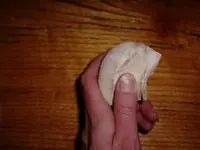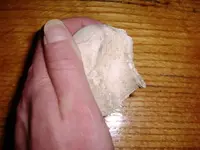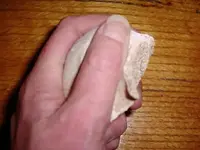You are using an out of date browser. It may not display this or other websites correctly.
You should upgrade or use an alternative browser.
You should upgrade or use an alternative browser.
Possible bone and antler tools
- Thread starter bean man
- Start date
COUNTRY GIRL
Silver Member
I'm going to leave this to the experts, I collect but........not sure. If that bone is a tool, I have some buckets to go through! I hope I find it, I'm not even waiting for the answer.
COUNTRY GIRL
Silver Member
I'll find it and post a pic for fun!
COUNTRY GIRL
Silver Member
I can't part with anything I find, it's horrible, I'll find it!bean man said:Cool, I hope you can find it.
COUNTRY GIRL
Silver Member
Oroblanco
Gold Member
- Joined
- Jan 21, 2005
- Messages
- 7,840
- Reaction score
- 9,876
- Golden Thread
- 0
- Location
- DAKOTA TERRITORY
- Detector(s) used
- Tesoro Lobo Supertraq, (95%) Garrett Scorpion (5%)
Hello,
No opinion on the finds, just a little tidbit that helps when you have found something questionable. Take your strongest magnifying glass and examine the surfaces of the article; compare this to known tools, many grinding tools have thousands of tiny scratches and foreign matter embedded, cutting tools show chipping and sometimes grinding for sharpening/re-sharpening; a handle area where human hands have held a tool often develops a "patina" from the oils in the hand of the user, darkening and smoothing the surface of the handle.
Some tools were "tools of convenience" an antler point or bone could be used as a planting dibble then discarded for example, likewise a sharp stick; for working leather (quite a process to make leather by hand) a round, smooth stone might be used to work grease into the hide and then discarded etc. Hammer stones used to crack hard nuts or bones (to get the nutritious marrow) were another type of tool of convenience, use perhaps once or perhaps many times then discarded. With this type of 'tool of convenience' it is difficult to make absolute statements unless there is a lot of evidence of use (as in the tiny scratches, foreign matter etc).
Oroblanco
No opinion on the finds, just a little tidbit that helps when you have found something questionable. Take your strongest magnifying glass and examine the surfaces of the article; compare this to known tools, many grinding tools have thousands of tiny scratches and foreign matter embedded, cutting tools show chipping and sometimes grinding for sharpening/re-sharpening; a handle area where human hands have held a tool often develops a "patina" from the oils in the hand of the user, darkening and smoothing the surface of the handle.
Some tools were "tools of convenience" an antler point or bone could be used as a planting dibble then discarded for example, likewise a sharp stick; for working leather (quite a process to make leather by hand) a round, smooth stone might be used to work grease into the hide and then discarded etc. Hammer stones used to crack hard nuts or bones (to get the nutritious marrow) were another type of tool of convenience, use perhaps once or perhaps many times then discarded. With this type of 'tool of convenience' it is difficult to make absolute statements unless there is a lot of evidence of use (as in the tiny scratches, foreign matter etc).
Oroblanco
Similar threads
- Suggestion
- Replies
- 6
- Views
- 360
- Replies
- 2
- Views
- 714
- Suggestion
- Replies
- 7
- Views
- 1K
Users who are viewing this thread
Total: 1 (members: 0, guests: 1)









